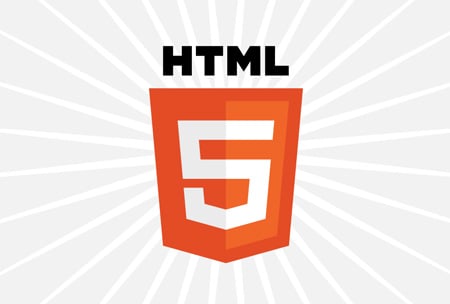This article is more than 1 year old
W3C tackles HTML5 confusion with, um, more confusion
Web daddy says CSS is HTML
The Worldwide Web Consortium has unveiled its HTML5 logo. And much like Apple, Google, and Microsoft before it, the organization that oversees HTML5 has confused it with all sorts of other web standards.
The W3C's new HTML5 logo is a "general-purpose visual identity" that denotes HTML5, CSS, SVG, WOFF, and other technologies used to build web applications. "The logo does not have a specific meaning," says Michael Nieling, the creative chief of Ocupop, which was commissioned by the W3C to design the logo. "The logo represents 'the Web platform' in a very general sense."
The HTML5 logo is intended to provide a "consistent, standardized visual vocabulary to serve as a framework for conversations, presentations and explanations moving forward," he explains. But it is not intended to show compliance HTML5 or any another standard. It's meant as a plaything for "anyone interested in, and building upon, the HTML5 family of technologies." If you like, you can put it on your website. Or you can buy it on T-shirt.

HTML5: has arrived - at least as a logo
The irony is that the logo is meant to clear up confusion over the HTMl5 moniker. "As with most productive design conversations, this one started with a desire for clearer communication. As you're aware, the term HTML5 has taken on a life of its own; there has been significant confusion and debate both within the developer community and in the public at large as to what exactly HTML5 is when the term is used outside of simply referring to the spec itself. This variability in perception is what inspired the project," Nieling said.
If you add the logo to your site, you can also add little baby logos that denote less-than-specific potions of the less-than-specific "HTML5 family", including "offline and storage", "multimedia", "device access", "performance and integration", and "semantics". But again, this doesn't imply validity or conformance with anything.
The hype over HTML5 hit epic proportions last year when it was used in Steve Jobs's jihad against Adobe Flash. Jobs, who has banned Flash on iPhones and iPads, said in early 2010 that Flash was dead and that the future of web media is HTML5. Google had said much the same thing – except for the Flash-is-dead bit – and like Google, Apple grouped all sorts of non-HTML5 technologies under the HTML5 umbrella.
Apple posted an HTML5 "showcase" meant to show-off HTML5. The site demoed video, graphics, and typography built with HTML5, CSS3, and Javascript.
Michael Mullany, the vice president of Javascript specialist Sencha, said at the time that HTML5 was becoming "unhinged from reality".
Eventually, even Microsoft joined this unreality. As Mozilla man Asa Dotzler pointed out, when Microsoft released one of its IE9 platform previews, it said that the browser's "HTML5 features include CSS3 2D Transforms."
"WTF, Microsoft?" Dotzler wrote "Are you trying to add more confusion to the conversation? HTML5 features include CSS3? That's seriously confused. Please stop this. HTML5 is HTML. CSS3 is CSS. The two are not the same thing."
And so the W3C has stepped in to clear up the confusion. Except that it hasn't. ®
